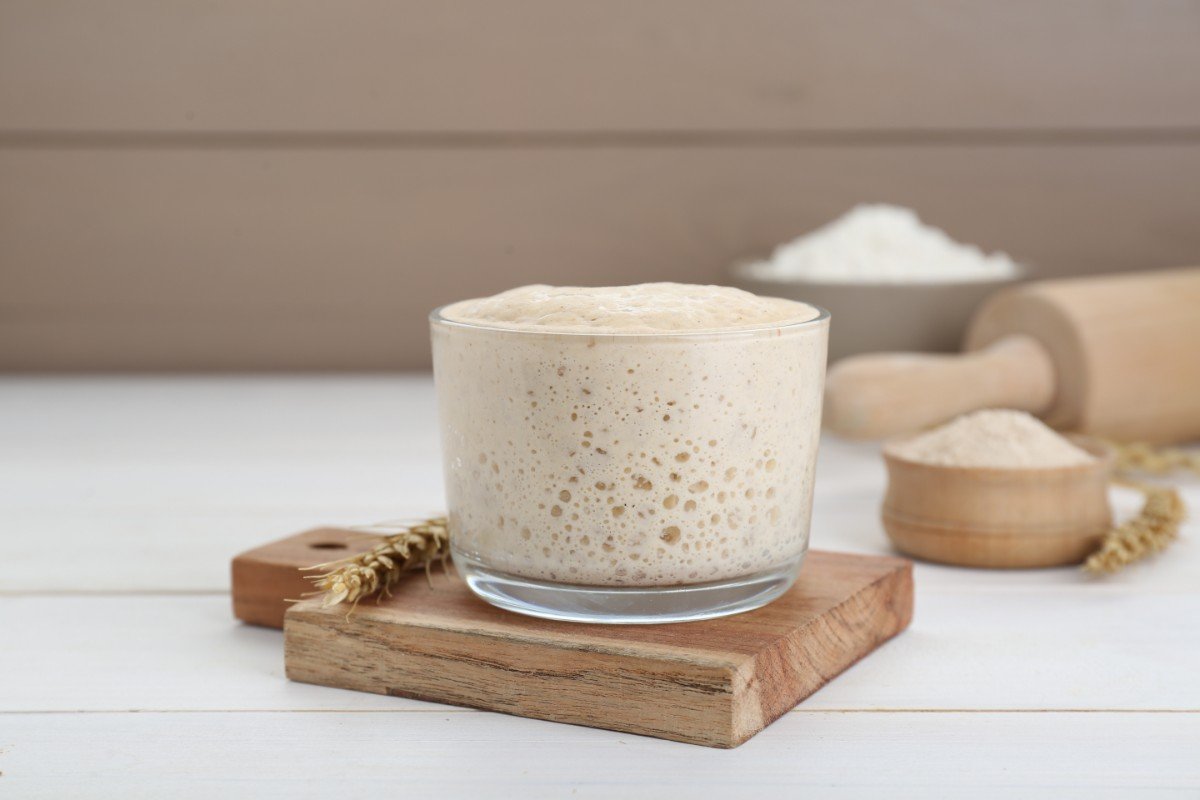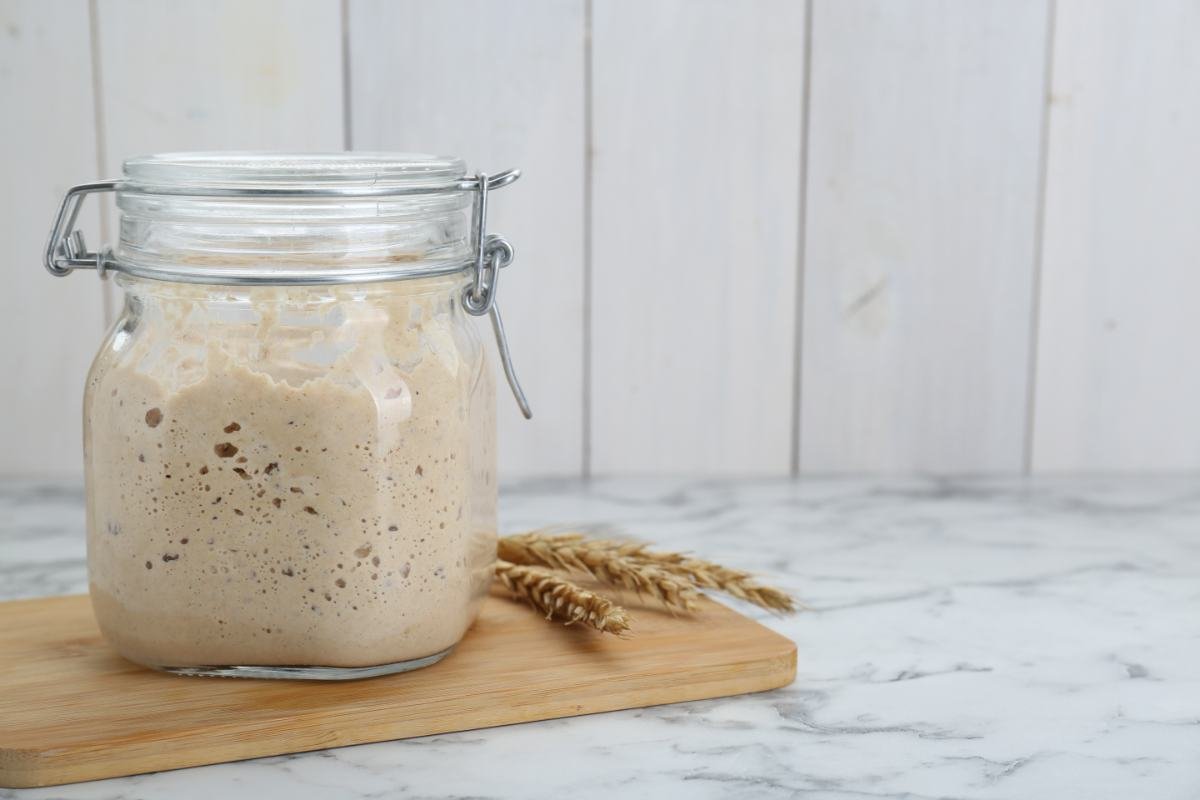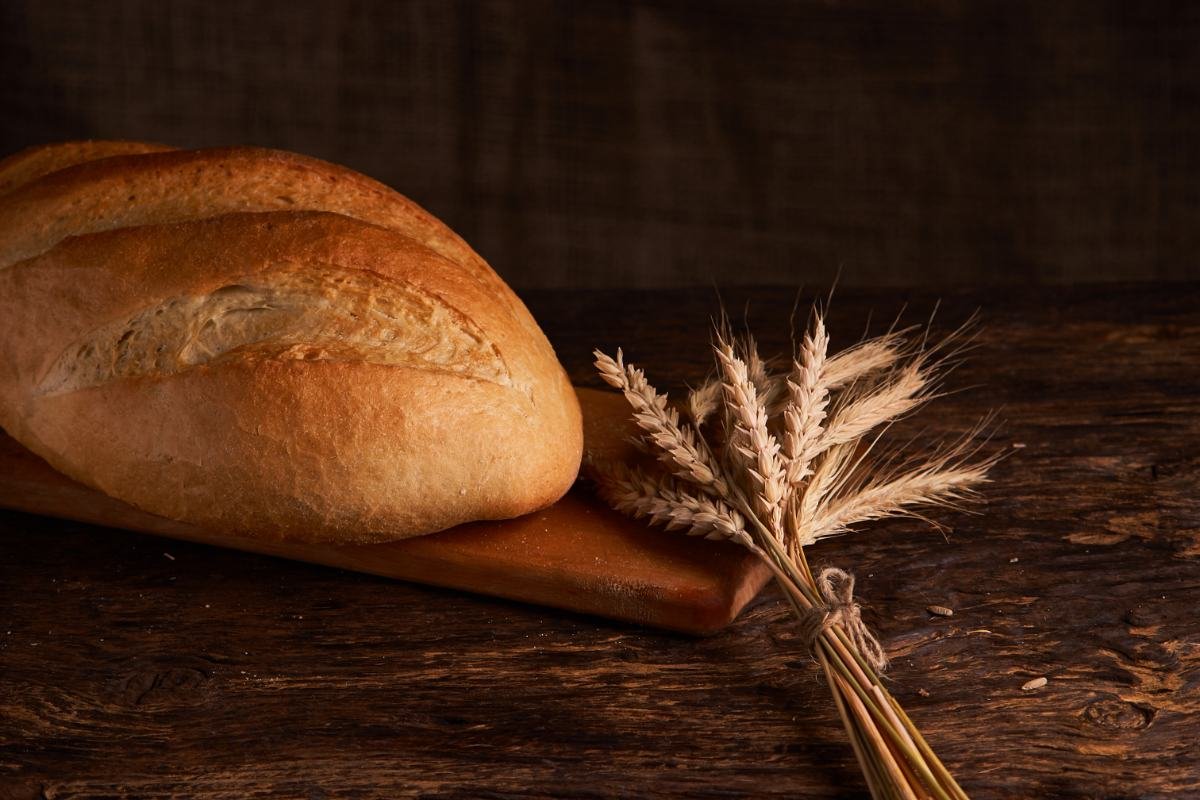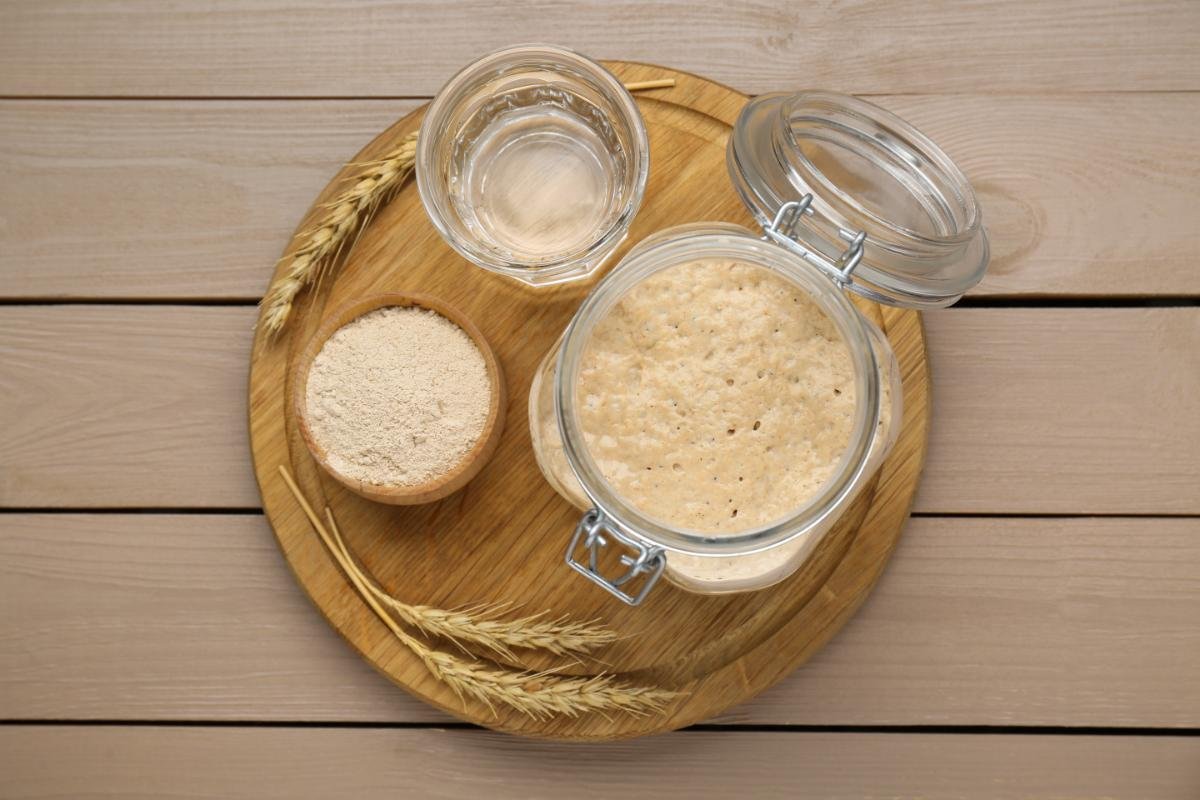Levain, often synonymous with sourdough starter, is a mixture of flour and water inhabited by yeast and lactic acid bacteria. These microorganisms ferment the mixture, creating a leavening agent capable of rising dough. The use of levain dates back thousands of years, with evidence suggesting its importance in ancient Egyptian baking practices. Its resurgence in popularity among artisan bakers and home enthusiasts highlights its timeless relevance.
The Magic of Levain
The magic of levain lies in its simplicity and the complex flavors it imparts to baked goods. Unlike commercial yeast, levain undergoes a slow fermentation process, breaking down gluten and making bread more digestible and nutritious. This section will delve into the science of levain, explaining how the balance of yeast and bacteria contributes to its unique characteristics and benefits in bread making.
Historical Significance
Exploring the rich history of levain offers insights into its enduring popularity and significance in the world of baking. From its ancient origins to its role in modern artisanal bread making, levain has been a key ingredient in creating flavorful, nutritious bread. This journey through time highlights the cultural and historical importance of levain, underscoring why it remains a beloved choice for bakers around the globe.
This introduction sets the stage for a deeper exploration of levain, including its types, creation process, and applications in baking. Each section is designed to educate and inspire, encouraging both novice and experienced bakers to discover the joys and challenges of working with levain.
Types of Levain

Levain, a cornerstone of artisan baking, offers a rich tapestry of flavors, textures, and aromas to breads that is unmatched by commercial yeast. The diversity in levain types not only caters to various baking needs and preferences but also allows bakers to impart unique characteristics to their creations. Understanding the different types of levain and their specific applications can elevate the quality and distinctiveness of baked goods.
Liquid Levain vs. Stiff Levain
The hydration level of a levain, or the ratio of water to flour, plays a pivotal role in determining its behavior and impact on bread. Liquid levain, often maintained at 100% hydration, is essentially a thick batter. This type of levain promotes a vigorous fermentation process, leading to a more pronounced acidic profile in bread. The high moisture content not only makes it easier to integrate into doughs but also accelerates the activity of yeast and bacteria, resulting in a faster rise. Bakers favor liquid levain for its ability to produce bread with a tender crumb and a complex, tangy flavor.
Stiff levain, on the other hand, is prepared with a lower hydration level, typically around 60% to 65%. The consistency of stiff levain resembles a firm dough, slowing down fermentation and yielding a milder acidity. This type of levain is ideal for breads that benefit from a more subtle sourness and a denser texture. Stiff levain also offers the advantage of a longer fermentation time, allowing bakers to develop deeper flavors and improve the dough’s strength.
Grain Variations
While wheat flour is commonly used in levain, incorporating other grains such as rye or spelt introduces new dimensions of flavor and nutrition. Rye levain, known for its robustness and ability to ferment even in cooler temperatures, imparts a distinctive earthy and slightly sour taste to bread. Rye flour’s high enzyme activity accelerates fermentation, making it a popular choice for bakers looking to achieve a more assertive flavor profile.
Whole wheat levain brings the inherent nuttiness and richness of whole grains to the forefront. Whole wheat flour, being more absorbent, requires adjustments in hydration but rewards bakers with bread that has a hearty texture and enhanced nutritional value. The complexity of flavors derived from whole wheat levain is especially appealing in rustic and country-style breads.
Flavor Profiles
The choice of levain significantly influences the flavor, aroma, and texture of the final product. Liquid levain, with its higher acidity, tends to produce bread with a tangier taste and a more open crumb structure. Stiff levain, due to its slower fermentation, results in a subtly sour flavor and a tighter crumb, suitable for breads like baguettes and batards.
Grain variations further expand the flavor palette. Rye levain contributes a deep, almost fruity tartness, while whole wheat levain adds a wholesome, slightly sweet undertone. Experimenting with different types of levain and grain combinations allows bakers to customize their bread to suit their taste preferences and culinary goals.
In summary, the art of levain baking lies in understanding and harnessing the unique properties of various levain types. Whether aiming for a light and airy loaf with a pronounced sourness or a dense bread with a gentle tang, the choice of levain—be it liquid or stiff, wheat or rye—serves as the baker’s tool for creativity and expression. As we delve into the intricacies of creating and maintaining your own levain starter, remember that the journey of baking is as much about exploration and discovery as it is about the final loaf.
Creating Your Own Levain Starter
Embarking on the journey of creating your own levain starter is both a craft and a rite of passage for aspiring artisan bakers. This living entity, a symbiotic culture of yeast and bacteria, is the heart of levain bread making. Cultivating a healthy, vigorous levain starter from scratch requires patience, attention, and a bit of intuition. This guide will walk you through the steps to create your levain starter, maintain its health, and troubleshoot common issues.
Starting Your Levain
Ingredients and Tools:
- Whole grain flour (rye or whole wheat is preferred for its nutrient density)
- Filtered water (chlorine-free to not inhibit the growth of microorganisms)
- A digital scale for accuracy
- A clear jar with a loose lid or cloth cover
Day 1: Initiating the Culture
- Mix 100 grams of whole grain flour with 100 grams of filtered water in your jar. Stir until there are no dry pockets of flour. This thick paste creates an environment conducive to capturing wild yeast and bacteria from the air.
- Cover the jar with a loose lid or a cloth to allow airflow but keep out dust and insects.
- Place the jar in a warm spot, ideally around 75°F to 80°F (24°C to 27°C), away from direct sunlight.
Days 2-7: Feeding the Starter
- Each day, you will remove about half of the mixture (discard it or use it in other recipes to minimize waste) and feed what remains with 50 grams of flour and 50 grams of water. This process, known as feeding, replenishes the food source for the yeast and bacteria, encouraging activity and growth.
- Stir the mixture well, scrape down the sides of the jar, and cover again.
- Continue this feeding routine daily, observing changes in volume, texture, and aroma.
Maintenance and Troubleshooting
Observing Your Levain:
- A healthy levain will show signs of life within 3 to 5 days: bubbling, a noticeable rise after feeding, and a pleasantly sour smell.
- If your starter isn’t showing much activity, ensure it’s kept in a warm environment and consider feeding it twice a day.
Common Issues:
- Hooch Formation: A layer of liquid (hooch) on top of your starter indicates it’s hungry and needs more frequent feedings.
- Mold Growth: Mold can develop if the starter is contaminated or not kept in clean conditions. If you see mold, it’s safest to start over with a new culture.
- Slow Activity: In cooler temperatures, your levain may become sluggish. Moving it to a warmer spot or increasing the frequency of feedings can help.
Storing and Reviving a Dormant Levain
Long-Term Storage:
- If you need to take a break from daily feedings, you can store your levain in the refrigerator. The cold slows down the fermentation, allowing you to reduce feedings to once a week.
- To prepare your levain for fridge storage, give it a hearty feeding, let it begin to bubble at room temperature, then tuck it away in the fridge.
Reviving a Dormant Levain:
- Reviving a refrigerated or neglected levain involves a few days of consistent feeding at room temperature. Begin with twice-daily feedings (morning and night), and look for signs of reactivation: bubbling, rising, and a vigorous smell.
- Once your levain is lively and doubling in size within 4 to 6 hours after feeding, it’s ready to be used in baking again.
Creating and maintaining a levain starter is akin to nurturing a garden; it thrives on care, consistency, and a bit of love. Each starter is unique, developing flavors and characteristics reflective of its environment and the hands that tend it. As you grow more accustomed to your levain’s quirks and needs, you’ll find it becoming a reliable partner in your baking adventures.
In the next section, we’ll explore how to incorporate this beautifully fermented levain into bread making, enhancing the texture, flavor, and nutritional profile of your loaves. The magic of levain transforms simple ingredients—flour, water, and salt—into bread that’s not only nourishing but also a testament to the art of baking.
Levain in Bread Making

Incorporating levain into bread making is both an art and a science, offering bakers the opportunity to craft loaves with unparalleled depth of flavor, texture, and nutritional benefits. This section delves into the role of levain in fermentation, techniques for incorporating it into different types of bread, and tips for controlling the sourness and texture of the final product. Understanding how to effectively use your levain starter can transform your bread-making process, elevating simple ingredients into extraordinary baked goods.
The Role of Levain in Fermentation
Levain contributes to bread making through a process called fermentation. This natural process involves the consumption of flour’s sugars by the yeast and bacteria within the levain, producing carbon dioxide, alcohol, and organic acids. The carbon dioxide gas is trapped within the dough’s gluten network, causing the bread to rise and develop a light, airy structure. The organic acids, primarily lactic and acetic acid, contribute to the bread’s flavor and help to strengthen the gluten network, improving the bread’s texture and shelf life.
The fermentation process also has nutritional implications. The acids produced during fermentation can help to break down phytates, compounds that can inhibit the absorption of minerals. This means that bread made with levain can be more nutritious, as it allows for better mineral absorption.
Techniques for Incorporating Levain into Different Types of Bread
Hydration Levels: Adjusting the hydration level of your dough is crucial when working with levain. The amount of water in your levain starter affects the overall hydration of your dough, which in turn influences the dough’s consistency and the bread’s crumb structure. A higher hydration leads to a more open crumb, while lower hydration results in a denser loaf. Experimenting with different hydration levels can help you achieve the desired texture in your bread.
Autolyse Method: This technique involves mixing the flour and water from your recipe and allowing the mixture to rest before adding the levain and salt. The resting period, typically 20 to 60 minutes, allows the flour to fully hydrate and begins the gluten development process. Incorporating the levain after the autolyse can make the dough easier to work with and enhance the final bread’s flavor and texture.
Bulk Fermentation: The bulk fermentation stage is where the dough undergoes its first major rise. The length of this stage can vary depending on the dough’s temperature and the activity level of your levain. During bulk fermentation, it’s important to perform a series of folds to strengthen the dough and evenly distribute the yeast and bacteria. This helps to achieve a uniform crumb structure and ensures that the bread rises evenly.
Controlling Sourness and Texture
The sourness of levain bread can be adjusted through various means, allowing bakers to tailor the flavor profile to their preferences.
Fermentation Time and Temperature: The length and temperature of fermentation have a significant impact on the sourness of the bread. A longer, cooler fermentation promotes the development of acetic acid, leading to a tangier bread. Conversely, a shorter, warmer fermentation favors lactic acid production, resulting in a milder flavor.
Levain Ratio: The amount of levain used in the dough also influences the bread’s sourness. A higher proportion of levain to flour can increase the sour flavor, while a lower proportion results in a milder taste.
Flour Type: The type of flour used in both the levain and the dough can affect the bread’s flavor and texture. Whole grain flours tend to produce a more robust flavor and denser crumb, while white flours yield a milder taste and lighter texture.
By mastering the use of levain in bread making, bakers can create loaves that are not only delicious but also visually stunning and nutritionally beneficial. The ability to manipulate fermentation variables allows for endless experimentation, making each batch of bread a new adventure.
In the next section, we’ll explore advanced applications of levain, moving beyond traditional bread to discover how this versatile ingredient can enhance a wide range of recipes. From pancakes and waffles to artisanal bakery creations, levain offers a world of possibilities for creative bakers.
Advanced Applications of Levain
Levain’s utility extends far beyond the realm of traditional bread making, offering a treasure trove of culinary possibilities that can enrich an array of dishes. Its natural leavening capabilities and unique flavor profile make it a versatile ingredient in both savory and sweet creations. This section explores how levain can be incorporated into pancakes, waffles, and other recipes, showcasing its adaptability in professional bakeries and home kitchens alike. Additionally, we’ll delve into the impact of levain on the nutritional profile of baked goods, highlighting its benefits for health-conscious consumers.
Beyond Bread: Using Levain in Pancakes and Waffles
Pancakes and waffles present an ideal canvas for the subtle tang and lightness that levain imparts. Incorporating levain into these breakfast staples not only adds complexity to their flavor but also contributes to a fluffier texture. To adapt your favorite pancake or waffle recipe, replace a portion of the liquid and flour with an equal weight of active, bubbly levain. This simple modification can transform the ordinary into the extraordinary, offering a delightful twist on classic morning fare.
The fermentation process inherent in levain also has practical advantages for these applications. By partially breaking down the flour’s gluten and starches, levain can make pancakes and waffles more digestible and tender. Moreover, the slight acidity of the levain can interact with baking soda or baking powder in the batter, enhancing the leavening effect for an even lighter, airier texture.
Creative Uses in Professional Bakeries
Professional bakers leverage levain’s versatility to craft an impressive variety of goods, from rustic pizzas and focaccias to delicate pastries and cakes. The use of levain baking in pizza dough, for instance, introduces a nuanced depth of flavor and a remarkably crisp, chewy crust that sets artisanal pies apart. In the case of sweet pastries, a small amount of levain can add a subtle complexity that balances the sweetness and enriches the overall taste profile.
The creativity with levain doesn’t stop at traditional bakery items. Some chefs incorporate it into fermentation-forward dishes, such as fermented grain salads or as a base for tangy sauces and dressings. The innovative use of levain in various culinary contexts underscores its potential to elevate a wide range of recipes.
Impact on Nutritional Profile
Levain’s benefits extend to the nutritional aspects of the foods it’s used in. The fermentation process enhances the bioavailability of nutrients in flour, making vitamins and minerals more accessible to the body. Additionally, the presence of prebiotic fibers and probiotics in levain can contribute to gut health, supporting a balanced microbiome.
For those sensitive to gluten, bread and other goods made with levain may be easier to digest. The long fermentation allows enzymes to break down a significant portion of the gluten, reducing its presence in the final product. While not suitable for individuals with celiac disease, this can make levain-based foods more tolerable for those with mild gluten sensitivities.
Levain embodies the fusion of tradition and innovation, offering endless possibilities for culinary exploration. Whether it’s introducing a new dimension to breakfast classics, enriching the flavor and texture of baked goods, or enhancing the nutritional value of meals, levain proves to be a valuable asset in both professional and home kitchens.
In the final section, we will reflect on the preservation and sharing of levain culture, a practice that not only fosters community and continuity but also connects us to the rich history of bread making.
Preservation and Sharing of Levain Culture

The tradition of sharing levain culture is as ancient as the art of bread making itself, symbolizing community, continuity, and the passing of knowledge from one generation to the next. This practice not only fosters a sense of connection among bakers but also serves as a means of preserving diverse strains of yeast and bacteria that contribute to the unique flavors and characteristics of levain-based products.
Sharing Levain with Others
Sharing a portion of your levain starter is a simple yet profound act of generosity. By dividing your active starter and passing it on, you enable others to embark on their own baking journeys without starting from scratch. This shared starter can evolve differently in its new environment, acquiring distinct qualities and flavors, thereby enriching the baking community’s diversity.
The Tradition of Passing Down Levain Starters
Many families and bakeries maintain levain starters that have been passed down for decades, if not centuries. These starters are not just ingredients but cherished heirlooms that carry the stories and techniques of those who nurtured them. Keeping a starter alive through regular feedings and using it in daily baking practices is a testament to the resilience and enduring appeal of traditional baking methods.
Maintaining and sharing a levain starter connects us to the timeless cycle of life, growth, and renewal inherent in the natural world. It reminds us of the importance of nurturing and community in sustaining the art and soul of baking. As we conclude our exploration of levain, let’s carry forward the spirit of generosity and tradition that this simple mixture of flour and water embodies.
Conclusion
In summary, levain is much more than just a component of bread making; it is a symbol of the artistry, science, and community that defines the world of artisan baking. Through the exploration of levain’s history, creation, and diverse applications, we’ve seen how this ancient leavening agent continues to enrich our culinary experiences and connect us across generations. Levain not only elevates the flavor and texture of baked goods but also offers nutritional benefits, making it a cherished ingredient among bakers and chefs alike. Whether you are just starting out or are an experienced baker, the journey with levain is one of continuous discovery and delight. Let the tradition of crafting, sharing, and enjoying levain-inspired creations inspire you to explore the endless possibilities that this living, evolving entity has to offer. Happy baking!

